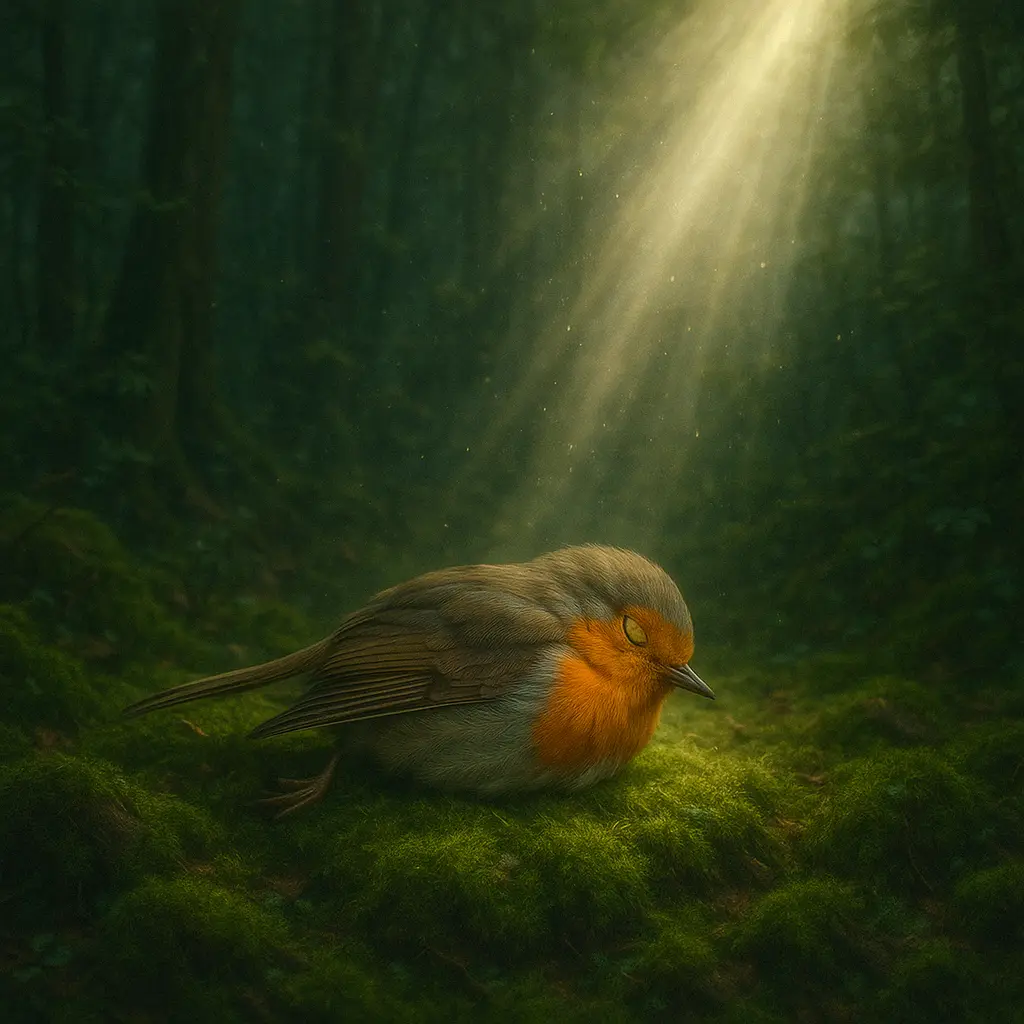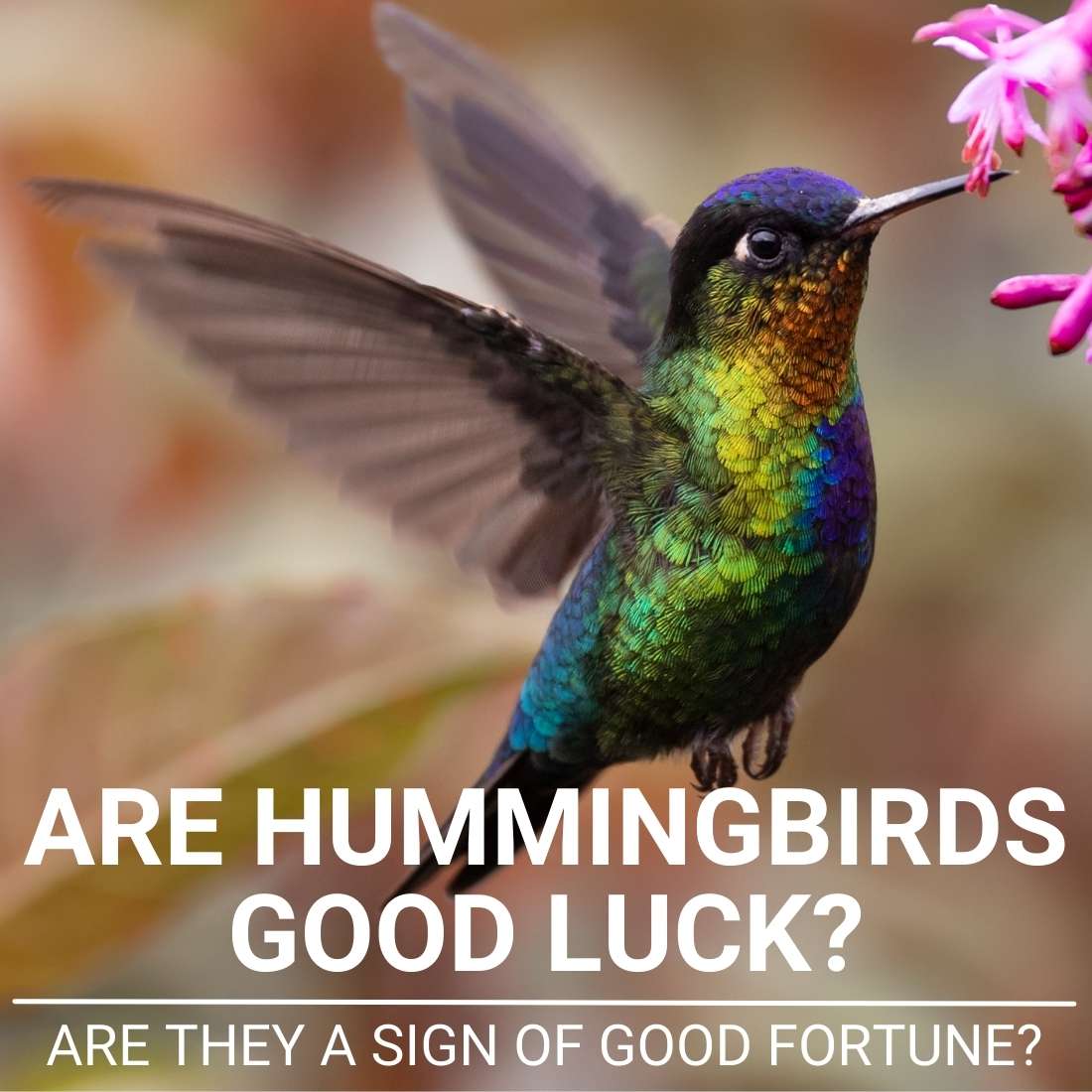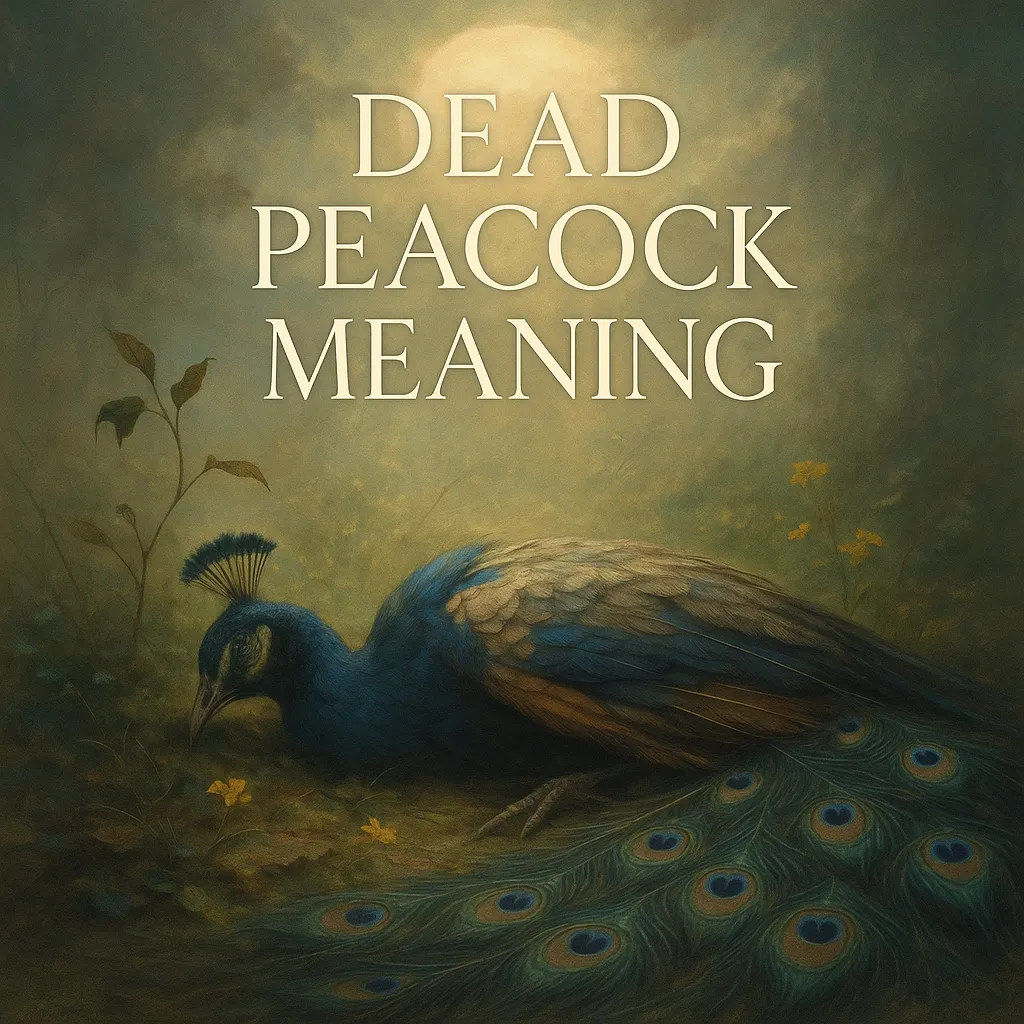The moment you discover a lifeless robin — its vibrant red breast now still against the earth — can be both jarring and deeply moving. This small creature that once filled your garden with melodious songs and flashes of russet plumage now lies silent, prompting an almost instinctive search for meaning. Throughout human history, the dead robin meaning has transcended mere coincidence, carrying profound spiritual significance across cultures and traditions.
From ancient folklore to biblical connections, finding a dead robin in your yard might be more than just a sad encounter with nature—it could be a message from beyond the veil, a symbolic turning point, or an invitation to reflection. As we explore this poignant symbol together, we’ll uncover the hidden language of these beloved birds even in death, and how their passage might illuminate our own spiritual journeys.
Table of Contents
- 1 Key Takeaways
- 2 The Robin as a Spiritual Messenger
- 3 Christian and Biblical Perspectives on Dead Robins
- 4 Indigenous Wisdom: Dead Robin Meaning in Native Traditions
- 5 Celtic and European Folk Traditions
- 6 Transformation and Cycles: The Deeper Meaning
- 7 Practical Spiritual Response: Honoring the Robin’s Message
- 8 Personal Meaning: Interpreting Your Unique Experience
- 9 Conclusion: The Robin’s Enduring Spiritual Gift
- 10 FAQ
- 10.1 What is the dead robin meaning spiritual?
- 10.2 What is the dead robin meaning in the Bible?
- 10.3 What is the red dead robin meaning?
- 10.4 What does finding a dead robin in your yard mean?
- 10.5 What is the meaning of dead robin Christmas cards?
- 10.6 How does dead cardinal meaning compare to dead robin symbolism?
- 11 Sources
Key Takeaways
- Dead robins often symbolize spiritual transformation and the natural cycle of death and rebirth
- In Christian traditions, robins carry sacrificial symbolism connected to Christ’s passion
- Many cultures view deceased robins as messengers between physical and spiritual realms
- The location and circumstances of finding a dead robin can affect its meaning for your personal journey
- Honoring a dead robin through simple ritual can provide emotional closure and deepen your connection to nature’s wisdom
The Robin as a Spiritual Messenger
In life, the robin carries powerful symbolism as a herald of spring, embodying joy, renewal, and fresh beginnings. With its cheerful song and distinctive red breast, this small bird has captured human imagination across generations. When we encounter a robin alive, we often feel uplifted by its presence—a reminder that brighter days lie ahead after winter’s darkness.
But what happens to this symbolism when the robin’s song is silenced? Rather than negating its spiritual significance, death actually transforms the message into something deeper. The robin becomes a messenger operating between worlds, carrying communications from the spirit realm to our physical reality. This role takes on enhanced importance precisely because of the contrast between the robin’s vibrant life energy and its stillness in death.
Robins hold a unique position in what might be called spiritual ecology—the interconnected system of symbolic meanings that helps humans make sense of natural phenomena. Unlike some birds associated primarily with death omens (such as ravens or owls), robins bridge multiple symbolic realms. They represent both the joy of life and, in death, the profound transition between states of being.
This duality connects beautifully to the robin’s natural behaviors. As creatures that migrate in some regions while remaining year-round residents in others, robins physically embody the concept of cyclical transitions. Their appearance in spring after winter’s barrenness makes them natural symbols for resurrection and renewal. When a robin dies, this symbolism doesn’t disappear—it evolves into a message about larger cycles of existence that include both life and death.
Christian and Biblical Perspectives on Dead Robins
One of the most enduring Christian legends about robins concerns how the bird acquired its red breast. According to medieval folklore, a plain brown robin approached Christ during his crucifixion, attempting to remove a thorn from his crown. As the bird pulled at the thorn, Christ’s blood stained its breast, marking all robins thereafter with this badge of compassion and sacrifice.
While robins aren’t specifically mentioned in biblical texts, birds as messengers appear throughout scripture. In Genesis, Noah sends out birds to determine if the flood waters have receded. In the New Testament, the Holy Spirit descends like a dove upon Jesus. These avian messengers establish a biblical precedent for birds as bearers of divine communication—a role that many Christians associate with robin encounters today.
The sacrificial symbolism of the robin in Christian tradition makes its death particularly significant. Just as Christ’s death represented passage to new life, a robin’s death can symbolize spiritual transformation. Many contemporary Christians interpret finding a dead robin as a reminder of Christ’s sacrifice and the promise of resurrection—death as a doorway rather than an ending.
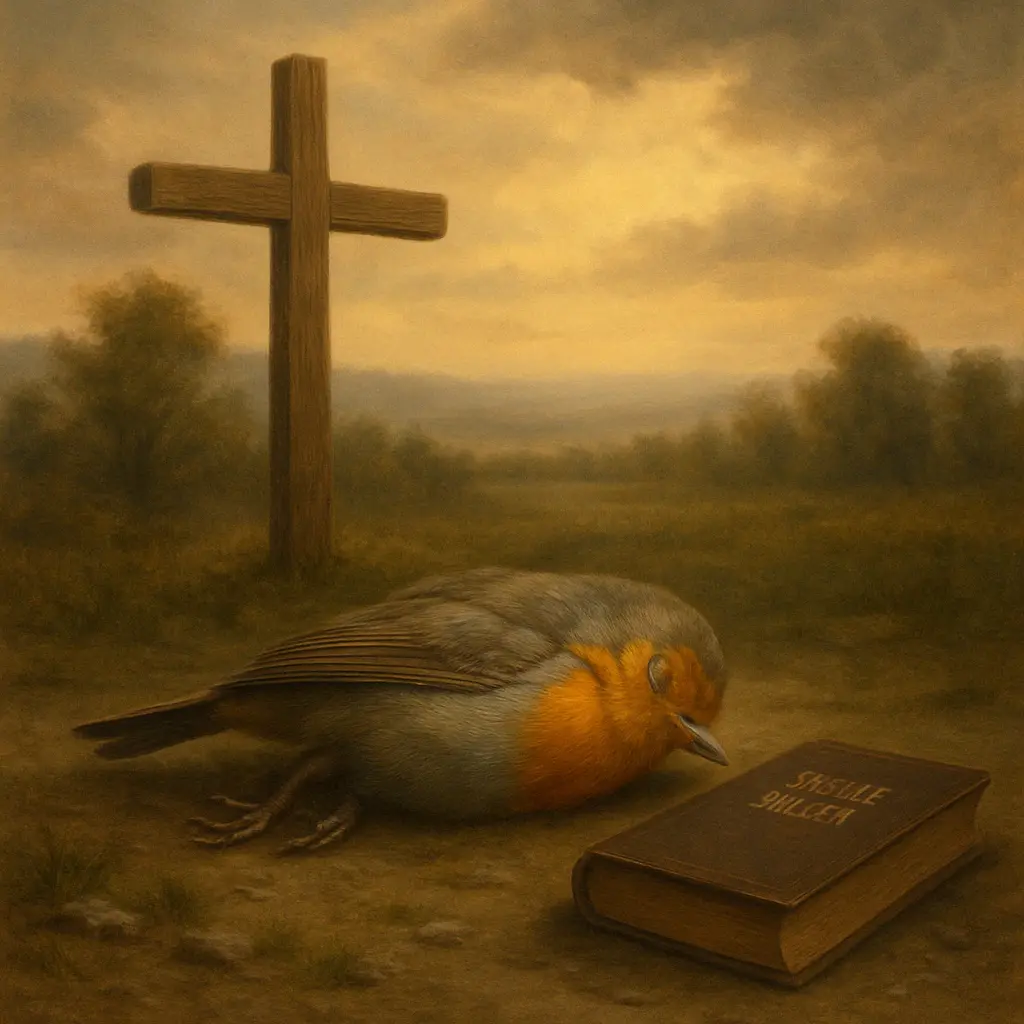
Modern Christian interpretations often view the dead robin as a gentle reminder of mortality and the temporal nature of earthly existence. Rather than being a fearful sign, it serves as encouragement to focus on spiritual matters and eternal life. This perspective transforms a potentially distressing encounter into an opportunity for spiritual reflection and renewed faith.
Indigenous Wisdom: Dead Robin Meaning in Native Traditions
Many Native American traditions hold birds in particular reverence as beings who travel between earth and sky, making them natural spiritual intermediaries. The robin specifically appears in numerous tribal stories as a messenger being whose red breast carries special significance. Among the Shawnee and Lenape peoples, robins are considered carriers of dawn’s light and harbingers of renewal.
When a robin dies, several indigenous perspectives view this not as an ending but as a transformation. The bird’s spirit is believed to carry messages between the living and ancestors who have passed on. This concept of birds as ancestral messengers appears consistently across diverse tribal traditions, from the woodland tribes of the Northeast to the plains nations.
Robin feathers hold ceremonial importance in many native practices. These feathers are sometimes collected (when found naturally shed or from birds who have died of natural causes) and incorporated into sacred items, prayer ties, or ceremonial fans. The color and energy of robin feathers are thought to carry the bird’s particular medicine or spiritual power.
Among the Lakota Sioux, there exists a concept called Wanáǧi Yuhápi, sometimes translated as “Spirit Carrier.” This tradition recognizes certain animals, including specific birds, as beings that can help transport prayers and carry spiritual communications. A robin that has crossed over may be honored through quiet ceremony, acknowledging its role in bridging worlds and facilitating connection with the spirit realm.
Celtic and European Folk Traditions
In Celtic mythology, robins were often viewed as psychopomps—creatures that guide souls between the worlds of the living and the dead. This sacred role gave the robin special status in Celtic folklore as a bird that could traverse the veil between realms. Finding a dead robin was therefore interpreted as a sign that this spiritual guide was actively working in your vicinity, perhaps helping a soul’s transition.
Medieval European folklore contains numerous tales about robins, including the belief that harming one would bring terrible misfortune. The death of a robin was often seen as an omen requiring careful interpretation, with attention paid to timing, location, and circumstances. Some regions held that a robin dying near your home signified an impending important message from the otherworld.
The Victorian era saw a fascinating development in robin symbolism, particularly regarding death. During this period of elaborate mourning rituals, robins became popular motifs on memorial cards and funerary art. The bird’s association with sacrifice and faithful love made it a poignant symbol for commemorating the deceased, particularly on Christmas cards where the robin represented the spirit of loved ones visiting during the holiday season.
In Celtic spiritual tradition, there exists the concept of Anam Cara (Soul Friend), a being that provides guidance across the threshold between life and death. While this term is typically applied to human spiritual companions, folk traditions extended this concept to animal guides, with robins frequently mentioned as creatures that serve this soul-friend function.
Transformation and Cycles: The Deeper Meaning
Perhaps the most profound meaning behind a dead robin encounter lies in its representation of transformation. Rather than viewing death as a terminal event, many spiritual traditions see it as a passageway between states of being. The robin’s life cycle—from egg to fledgling to mature bird to death—mirrors larger patterns of existence, making it a perfect symbol for transformation and renewal.
This symbolism connects deeply to the robin’s natural behaviors. In many regions, robins migrate seasonally, disappearing and reappearing with the changing seasons. This physical manifestation of cyclical existence reinforces their symbolic association with death and rebirth. When a robin dies, it can be seen as completing one cycle in an ongoing spiral of existence.
The death of a robin offers a powerful parallel to cardinal symbolism, though with distinct differences. While both birds share the symbolic power of red coloration, robins tend to represent more gentle transformation, whereas cardinals often signify more dramatic spiritual messages or visitations from departed loved ones.
On a personal level, encountering a dead robin might symbolize aspects of your own transformation journey. It may appear during times when you’re shedding old identities, beliefs, or life phases. Such encounters invite reflection on what parts of yourself are completing their cycle and what new aspects are emerging. The robin’s death becomes a mirror for your own evolutionary process.
From an alchemical perspective, the dead robin symbolizes the necessary dissolution that precedes reconstitution—the breaking down of the old form to allow the emergence of something new. This reflects the alchemical principle of solve et coagula (dissolve and coagulate), a fundamental process in both metaphysical and psychological transformation.
Practical Spiritual Response: Honoring the Robin’s Message
When you encounter a dead robin, respectful disposal becomes both a practical necessity and a spiritual opportunity. Consider burying the bird in a quiet spot in your garden, returning it to the earth while acknowledging its role in the greater cycle of life. This simple act honors both the physical creature and any spiritual significance it might carry.
You might also perform a brief blessing ritual for the robin’s spirit. This doesn’t need to be elaborate—a moment of quiet gratitude for the bird’s life and message can suffice. Some traditions suggest lighting a small candle, speaking words of respect, or placing a seed or flower with the bird if burying it.
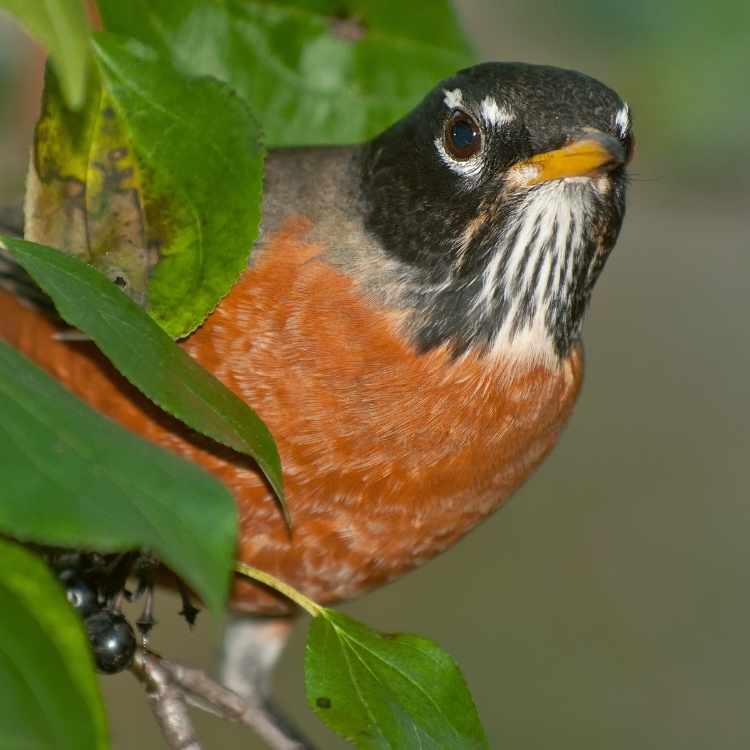
Journaling about your encounter provides a powerful way to process its meaning. Consider recording not just the circumstances of finding the dead robin, but also your emotional response and any intuitive insights that arise. Questions to explore might include: What transitions am I experiencing now? What message might this robin be bringing? What in my life is completing its cycle?
A simple meditation incorporating robin imagery can help internalize the experience’s meaning. Visualize the robin in life—vibrant and singing—then witnessing its peaceful transition. Allow yourself to connect with the wisdom of cycles, embracing both the joy of life and the necessary transformations that death represents.
Personal Meaning: Interpreting Your Unique Experience
Several factors influence how you might personally interpret a dead robin encounter. The timing matters—finding one during a major life transition carries different significance than during a period of stability. Your emotional response provides valuable clues to its personal meaning. Strong reactions often indicate that the symbol is activating something important in your subconscious.
When encountering a dead robin, consider asking yourself: What transitions am I currently navigating? What aspects of my life are ending or transforming? Does this robin remind me of someone or something? What was I thinking about just before this encounter? Your answers may reveal surprising connections to your spiritual journey.
A helpful journaling exercise involves writing a letter to the robin, asking what message it brings for you specifically. Then, without thinking too hard, write the response as if from the robin. This form of active imagination can bypass conscious limitations and access deeper intuitive wisdom about what this encounter means for your unique situation.
It’s important to distinguish between projection (imposing predetermined meanings) and authentic spiritual meaning. While traditional symbolism provides helpful frameworks, your personal connection to the experience matters most. The most meaningful interpretation will resonate deeply, feeling right on an intuitive level beyond intellectual understanding.
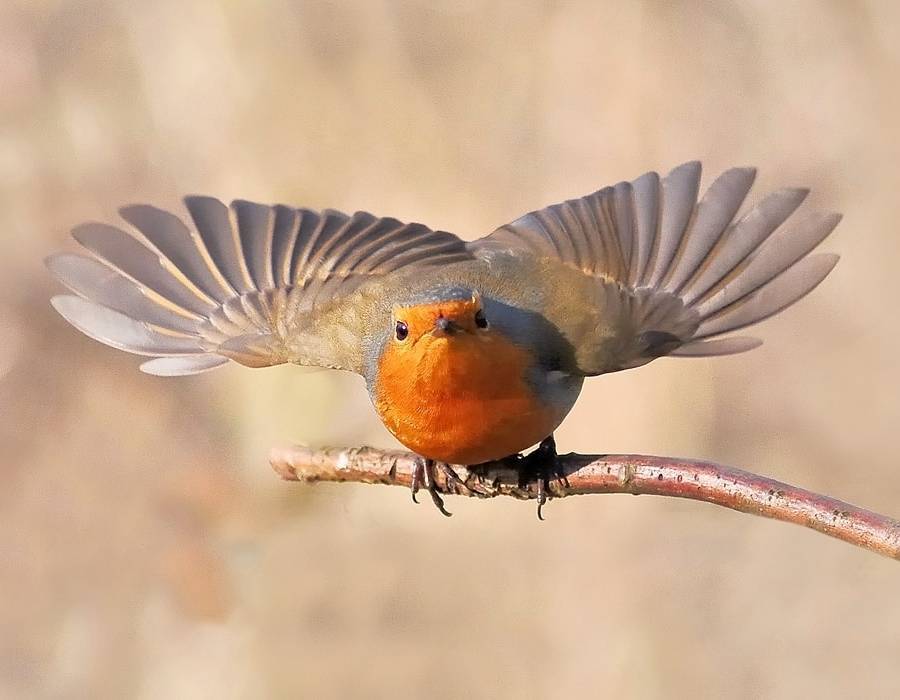
Conclusion: The Robin’s Enduring Spiritual Gift
Throughout our exploration of dead robin meaning, we’ve discovered a rich tapestry of spiritual significance spanning cultures and traditions. From Christian sacrificial symbolism to indigenous messenger concepts, from Celtic psychopomp traditions to personal transformation journeys, the robin’s passage carries profound wisdom about life’s cyclical nature. Even in death, this beloved bird continues to serve as a bridge between worlds.
There is unexpected beauty in finding meaning amid mortality. When we approach a dead robin with reverence rather than fear or disgust, we open ourselves to nature’s deeper teachings about impermanence and renewal. In honoring the robin’s transition, we practice engaging mindfully with the inevitable cycles of existence that shape all life, including our own.
This encounter invites deeper connection with the natural world around us. The robin—in both life and death—reminds us that we are not separate from these cycles but integral participants in them. By paying attention to such signs and developing our capacity to read nature’s language, we enrich our spiritual understanding and ecological awareness.
As you move forward from this exploration, I encourage you to honor your intuitive response to any such encounters you may have. The most meaningful spiritual insights often arise not from rigid interpretations but from the quiet wisdom of your own heart in conversation with the natural world. Let the robin’s message transform you in whatever way speaks to your unique spiritual journey.
FAQ
What is the dead robin meaning spiritual?
Spiritually, a dead robin symbolizes transformation and renewal. It represents the completion of one cycle and the beginning of another, often appearing during periods of personal transition. Many spiritual traditions view the deceased robin as a messenger between worlds, carrying communications from the spirit realm to guide your journey.
What is the dead robin meaning in the Bible?
While robins aren’t specifically mentioned in biblical text, they gained Christian significance through medieval legends where a robin tried to remove thorns from Christ’s crown, staining its breast red with sacred blood. A dead robin can symbolize Christ’s sacrifice, resurrection, and the promise of new life beyond death.
What is the red dead robin meaning?
The red-breasted robin in death carries amplified symbolism due to its distinctive coloration. The red breast, associated with life force and vitality, creates a powerful contrast with death, emphasizing transformation. In many traditions, this red marking represents sacred blood, passionate sacrifice, and the heart’s journey through life and beyond.
What does finding a dead robin in your yard mean?
Finding a dead robin in your yard often signals a domestic transition or change related to your home life or foundation. It may indicate completion of a family cycle, transformation of home energy, or a message pertaining to your sense of security and belonging. The specific location within your yard provides additional contextual clues.
What is the meaning of dead robin Christmas cards?
Victorian-era Christmas cards often featured dead robins as poignant reminders of absent loved ones. This tradition combined the robin’s association with Christmas (as Britain’s winter bird) with the belief that the spirits of the deceased visited during the holiday season. The imagery symbolized remembrance, continued spiritual presence, and seasonal connections.
How does dead cardinal meaning compare to dead robin symbolism?
Both cardinals and robins share red coloration symbolism, but dead cardinals typically represent more dramatic spiritual visitations or messages from departed loved ones. Robin death tends to signify gentler transitions and natural cycles, while cardinal death often indicates more direct communication from the spirit world or significant life redirections.
